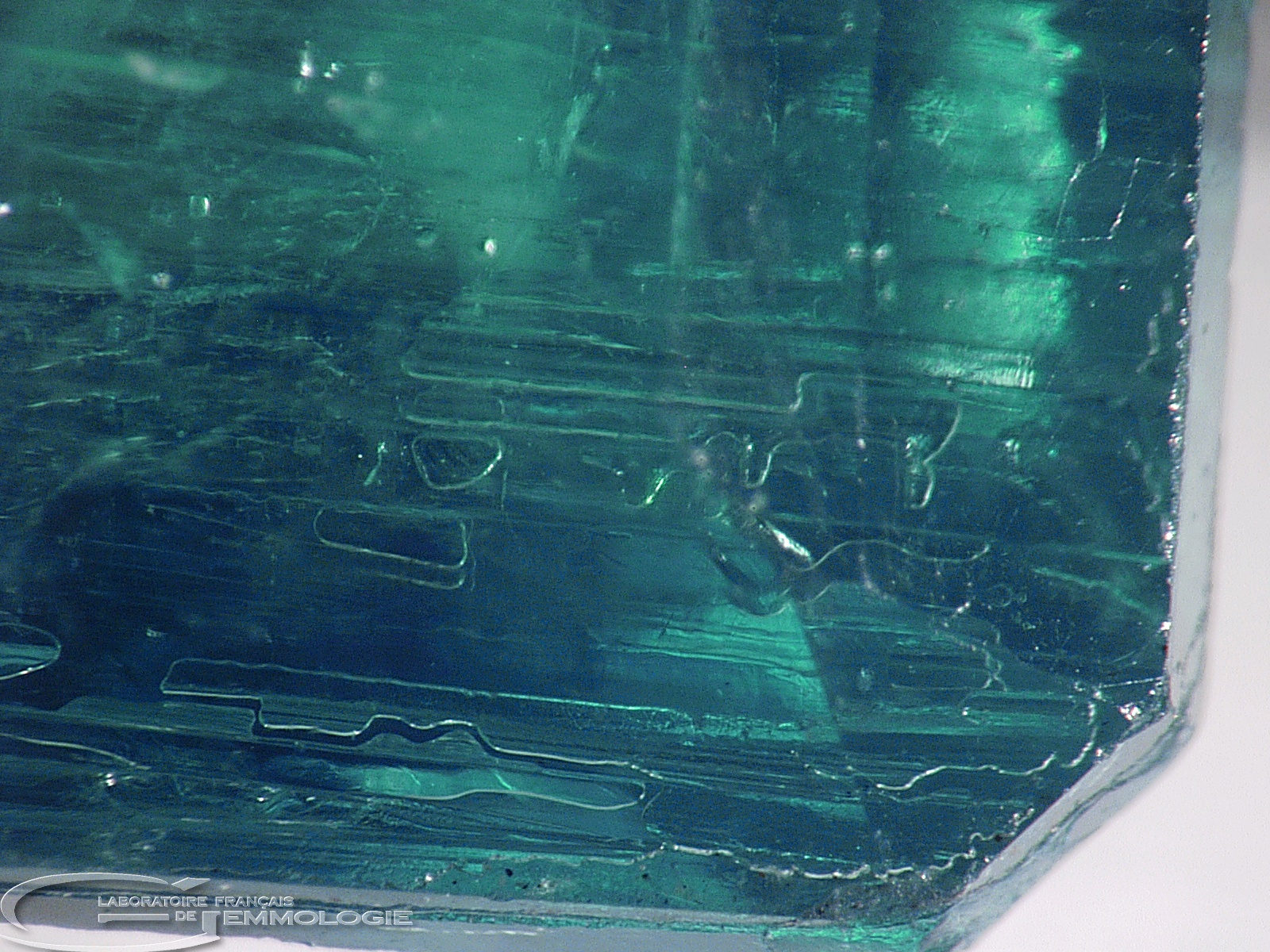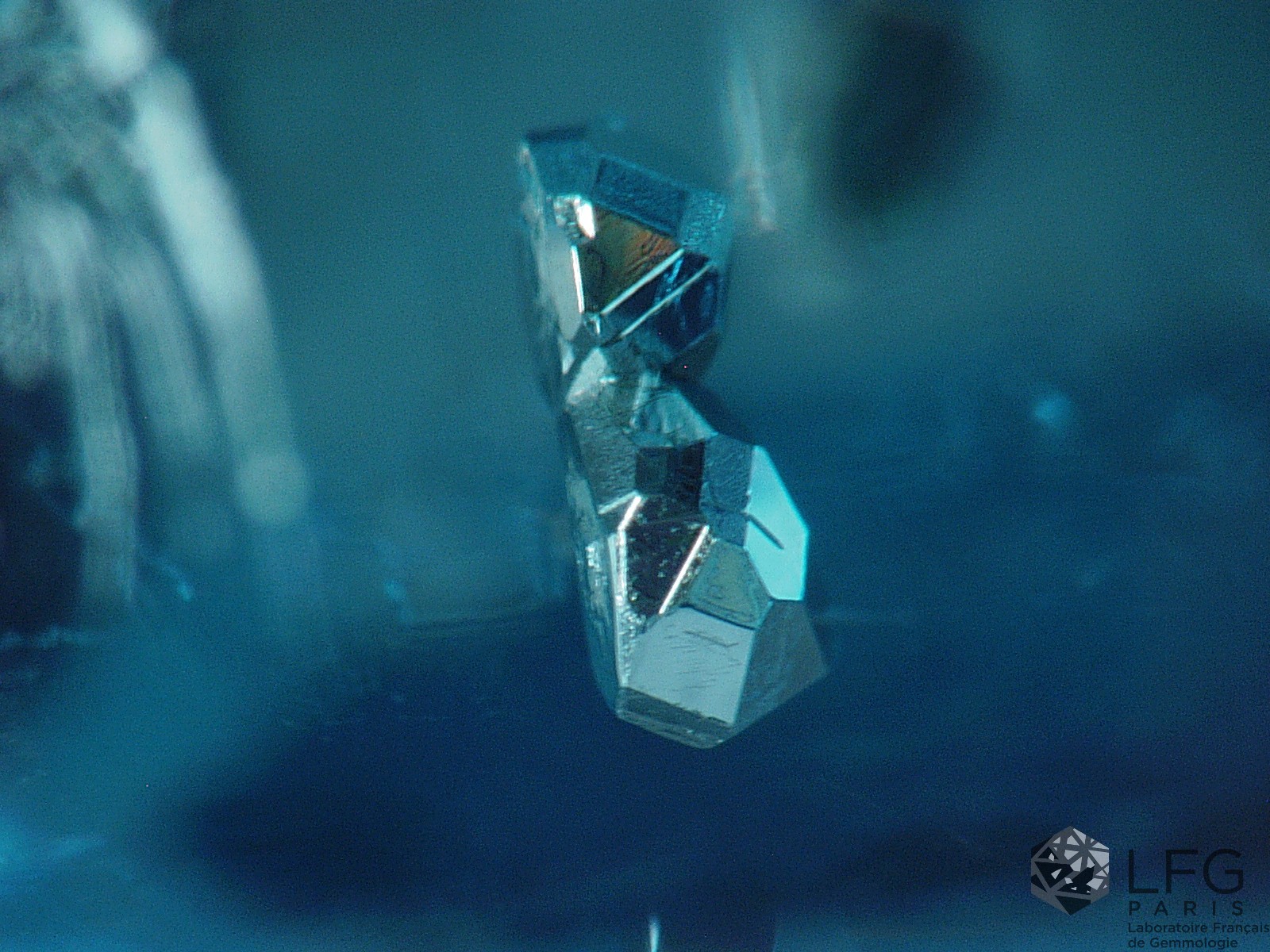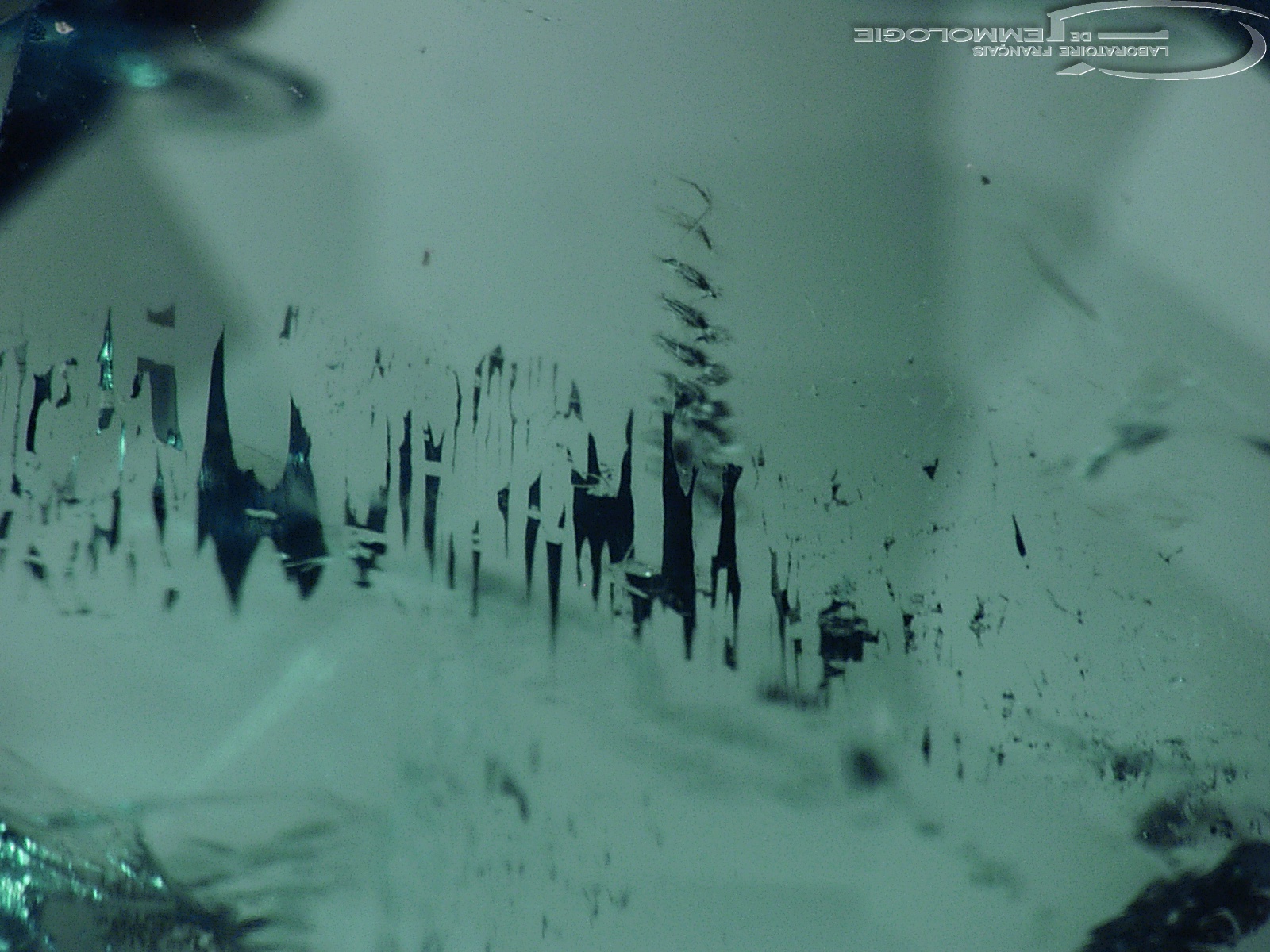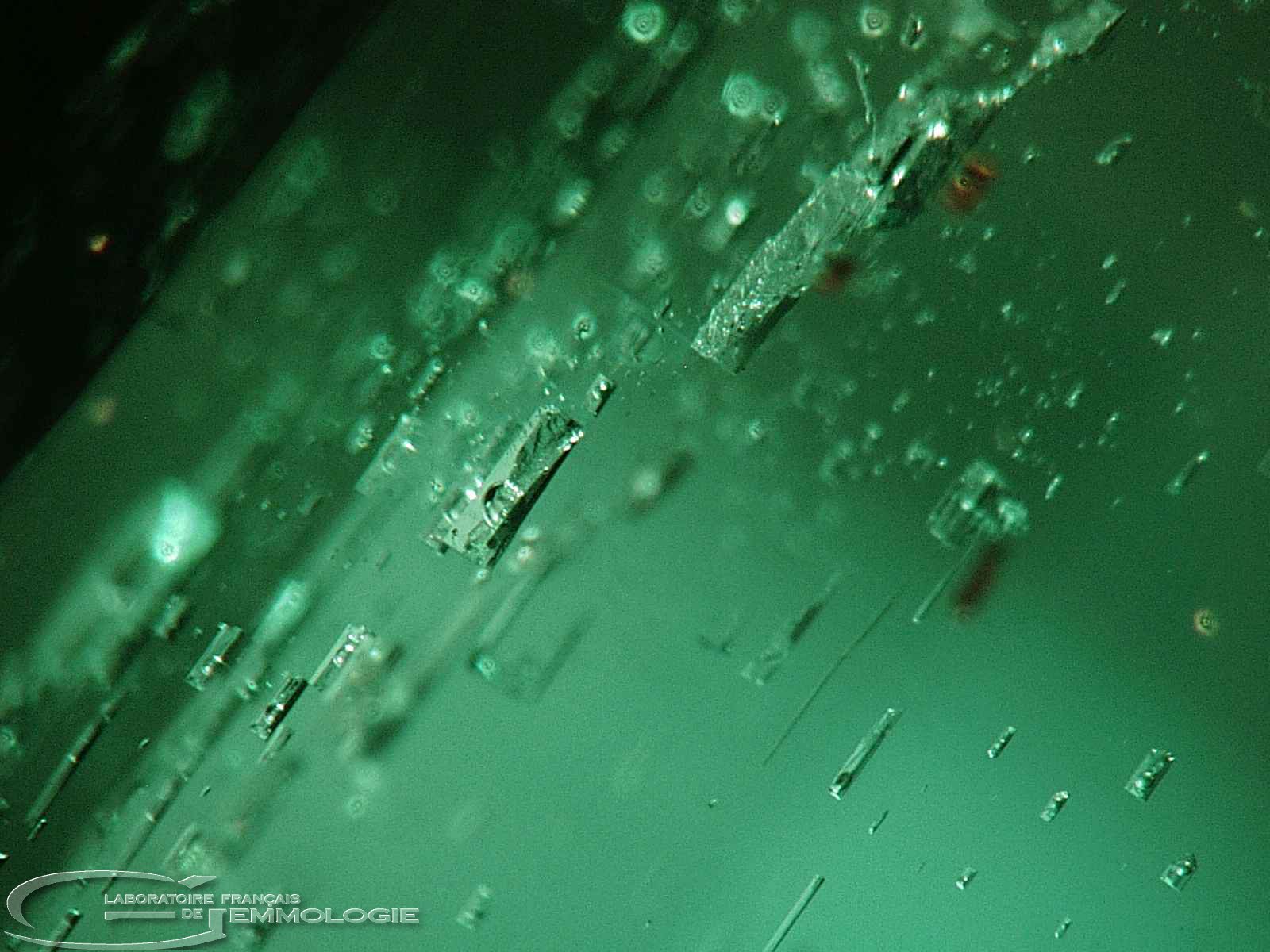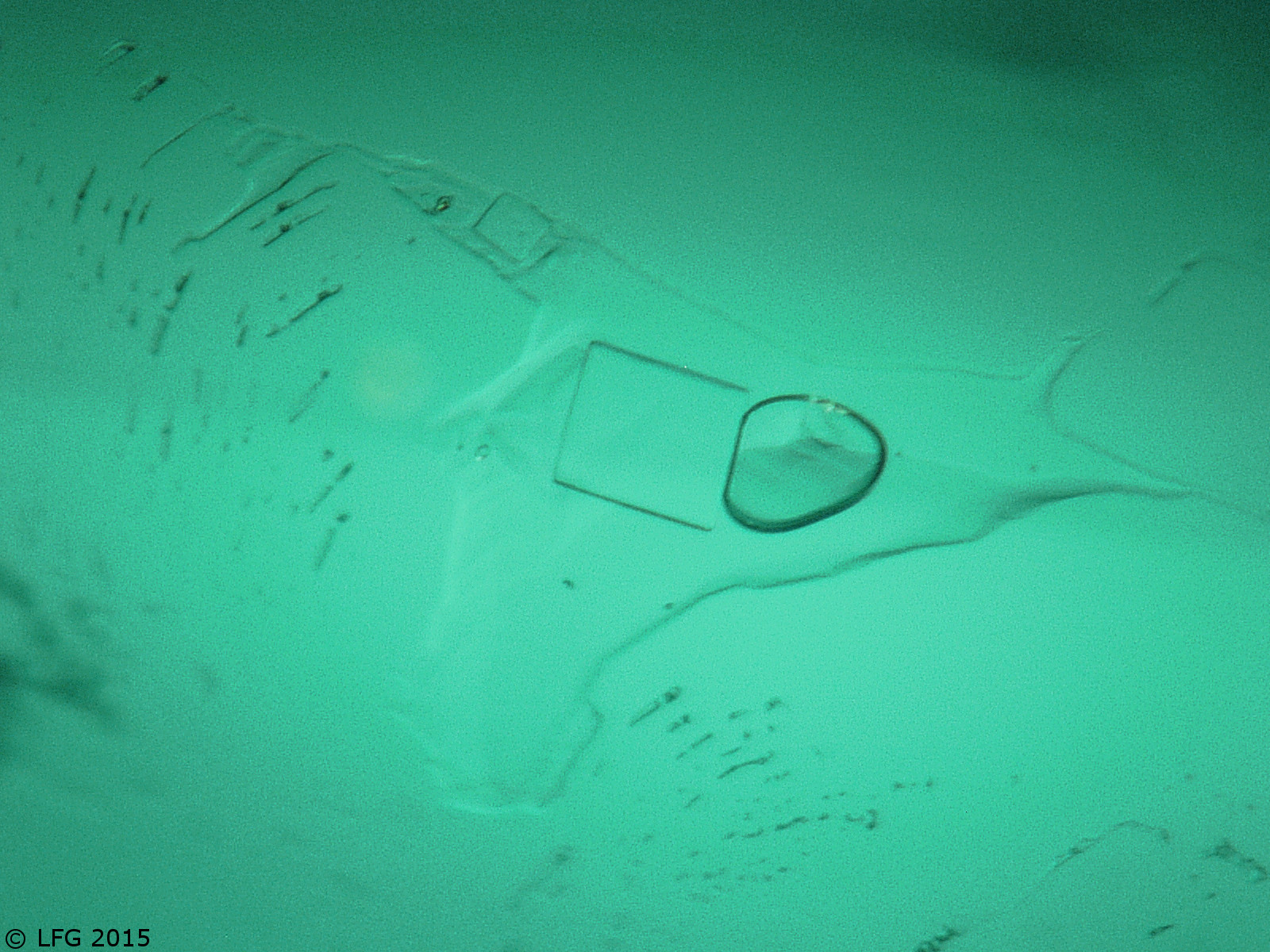GEMSTONE LIBRARY
EMERALD
Emerald is a variety of beryl coloured green by chromium and/or vanadium. This gemstone is the product of exceptional geological circumstances that bring together a light element, beryllium, which is found primarily on the surface of the Earth, with a heavy element, chromium, which prefers to lodge in the depths.
Laboratory analysis is requested for emeralds to determine their likely geographical origin and the treatment used (none, oil or resin, in what quantity?). To detect the filling products found in emeralds, infra-red spectrometry and observation of inclusion are used.
A conclusion is drawn as to the geographical origin of the emeralds based on numerous spectrometric and chemical data that differ depending on their development. Observing the inclusions found in most emeralds is also an important component in analysing this gemstone.
CHARACTERISTICS
- Name: Emerald
- Mineralogical nature: Beryl
- Colour: Green (sometimes trapiche)
- Crystal system: Hexagonal
- Chemical composition: Be3Al2(Si6O18)
- Causes of colour: Cr3+ and/or V3+
- Density: 2.68 to 2.77
- Hardness: 7.5
- Cleavage: None
- Fracture: Conchoidal
- Optic sign: Negative uniaxial
- Refractive index: no: 1.574 to 1.600 / ne: 1.568 to 1.592
- Birefringence: 0.006 to 0.009
- Dispersion: 0.014
- Pleochroism: Clean green-yellow to green-blue
- UVL: Inert to weak red, yellow in fracture if oil is present, white in fracture if resin is present
- UVC: Inert to weak red, yellow in fracture if oil is present, white in fracture if resin is present
- Treatments: Filling with oil and/or resin
- Syntheses: Anhydrous dissolution
- Hydrothermal dissolution
- Geographical origin: Colombia, Zambia, Brazil, Pakistan, Ethiopia, Madagascar, Russia, Zimbabwe, Nigeria, etc.


